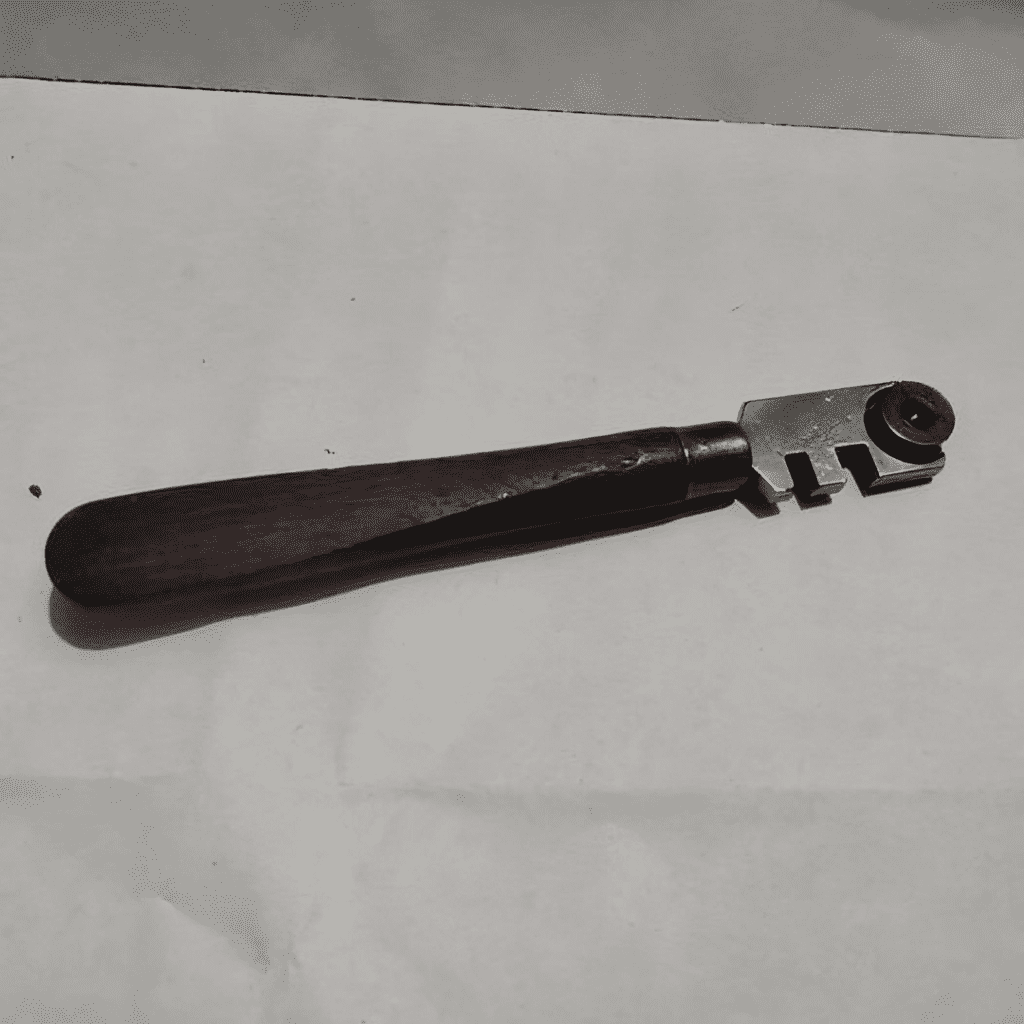History of the Glass Cutter
The glass cutter, a seemingly unassuming tool, boasts a rich history that dates back to the early 19th century. Prior to its invention, glass artisans relied on diamonds or other hard metals to score and cut glass, a method that often resulted in uneven, unpredictable cuts and an increased risk of shattering the material.
In the mid-1800s, however, the game-changing introduction of the first patented glass cutter featuring a hardened steel wheel revolutionized the way glass was cut and shaped. This innovative design allowed for precise, controlled cuts, making the process more accessible and efficient for a wide range of applications, from industrial manufacturing to the intricate work of skilled artisans.
Today, the glass cutter remains an indispensable tool, continuing to play a vital role in countless industries and creative endeavors.

Usage of the Glass Cutter
A glass cutter’s primary function is to score the glass surface, creating a controlled crack for a clean break. Here’s how to use this vintage tool:
- Preparation: Clean the glass surface and place it on a flat, stable area.
- Marking: Mark the desired cut line with a ruler and a marker or grease pencil.
- Scoring: Firmly hold the glass cutter and drag the cutting wheel along the marked line with even pressure to achieve a clean score.
- Breaking: Position the scored line over the edge of the work surface or use a snapping tool, then apply gentle pressure to snap the glass along the scored line.
The ergonomic handle and precision wheel of the glass cutter allow for delicate, intricate cuts, making it essential for artisans, glaziers, and hobbyists.
Legacy of the Glass Cutter
The vintage glass cutter symbolizes craftsmanship and innovation. Its legacy lives on in the works of stained glass artists, glaziers, and DIY enthusiasts who value its precision and control. Despite technological advancements and automated cutting machines, the manual glass cutter remains cherished for its simplicity and effectiveness.
Collectors and history buffs seek vintage glass cutters not only for their functionality but also as artifacts representing the evolution of glassworking tools. These tools, often featuring wooden handles and brass fittings, are prized for their aesthetic appeal and historical significance.
The principles behind the vintage glass cutter have influenced modern glass cutting tools and techniques. However, the basic design remains largely unchanged, showcasing its enduring ingenuity and practicality.
Conclusion
The vintage glass cutter is more than just a hand tool; it reflects the evolution of craftsmanship and industrial innovation. Its ability to deliver precise and controlled cuts has made it indispensable in glassworking for over a century. As technology advances, the vintage glass cutter remains a cherished link between past and present, preserving the art of manual glass cutting for future generations.